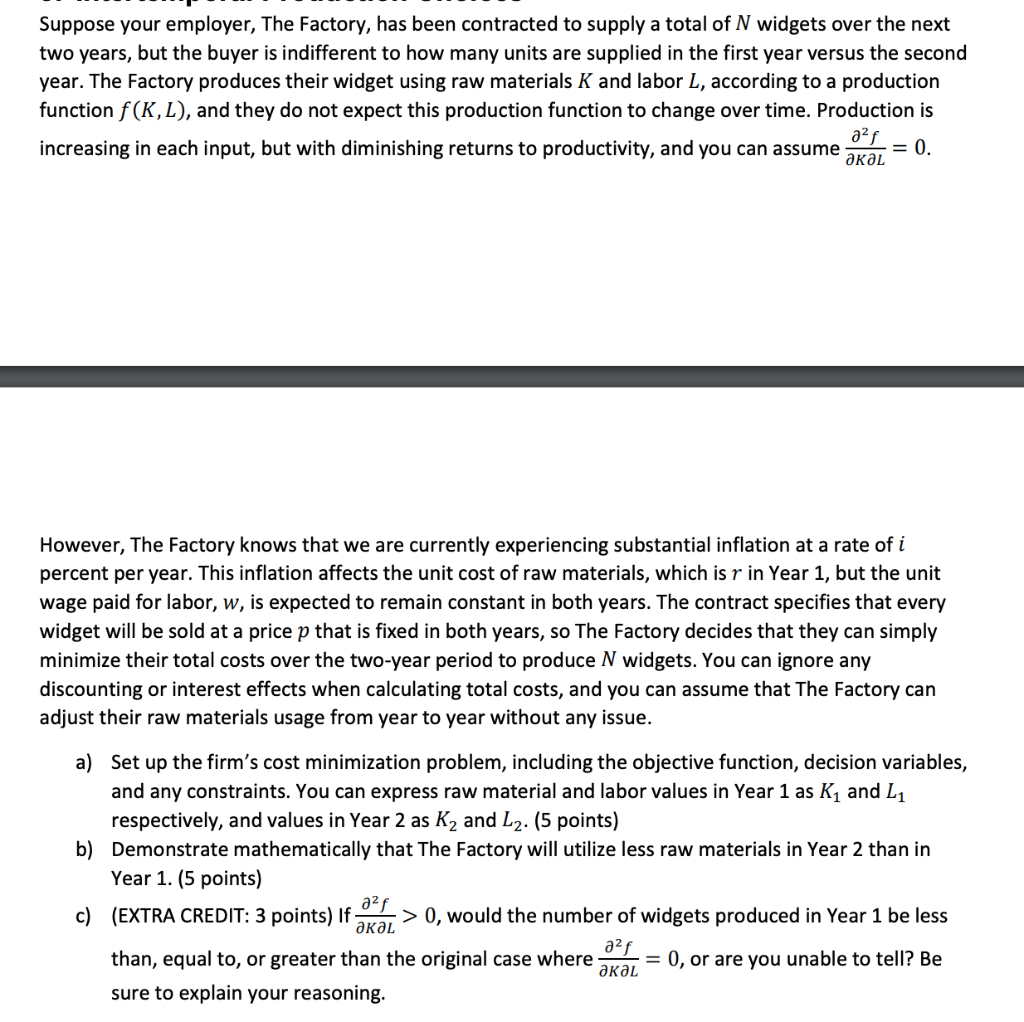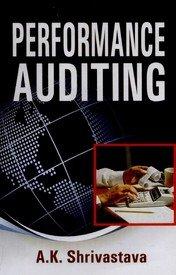
Suppose your employer, The Factory, has been contracted to supply a total of N widgets over the next two years, but the buyer is indifferent to how many units are supplied in the first year versus the second year. The Factory produces their widget using raw materials K and labor L, according to a production function f(K,L), and they do not expect this production function to change over time. Production is increasing in each input, but with diminishing returns to productivity, and you can assume KL2f=0. However, The Factory knows that we are currently experiencing substantial inflation at a rate of i percent per year. This inflation affects the unit cost of raw materials, which is r in Year 1 , but the unit wage paid for labor, w, is expected to remain constant in both years. The contract specifies that every widget will be sold at a price p that is fixed in both years, so The Factory decides that they can simply minimize their total costs over the two-year period to produce N widgets. You can ignore any discounting or interest effects when calculating total costs, and you can assume that The Factory can adjust their raw materials usage from year to year without any issue. a) Set up the firm's cost minimization problem, including the objective function, decision variables, and any constraints. You can express raw material and labor values in Year 1 as K1 and L1 respectively, and values in Year 2 as K2 and L2. (5 points) b) Demonstrate mathematically that The Factory will utilize less raw materials in Year 2 than in Year 1 . (5 points) c) (EXTRA CREDIT: 3 points) If KL2f>0, would the number of widgets produced in Year 1 be less than, equal to, or greater than the original case where KL2f=0, or are you unable to tell? Be sure to explain your reasoning. Suppose your employer, The Factory, has been contracted to supply a total of N widgets over the next two years, but the buyer is indifferent to how many units are supplied in the first year versus the second year. The Factory produces their widget using raw materials K and labor L, according to a production function f(K,L), and they do not expect this production function to change over time. Production is increasing in each input, but with diminishing returns to productivity, and you can assume KL2f=0. However, The Factory knows that we are currently experiencing substantial inflation at a rate of i percent per year. This inflation affects the unit cost of raw materials, which is r in Year 1 , but the unit wage paid for labor, w, is expected to remain constant in both years. The contract specifies that every widget will be sold at a price p that is fixed in both years, so The Factory decides that they can simply minimize their total costs over the two-year period to produce N widgets. You can ignore any discounting or interest effects when calculating total costs, and you can assume that The Factory can adjust their raw materials usage from year to year without any issue. a) Set up the firm's cost minimization problem, including the objective function, decision variables, and any constraints. You can express raw material and labor values in Year 1 as K1 and L1 respectively, and values in Year 2 as K2 and L2. (5 points) b) Demonstrate mathematically that The Factory will utilize less raw materials in Year 2 than in Year 1 . (5 points) c) (EXTRA CREDIT: 3 points) If KL2f>0, would the number of widgets produced in Year 1 be less than, equal to, or greater than the original case where KL2f=0, or are you unable to tell? Be sure to explain your reasoning







